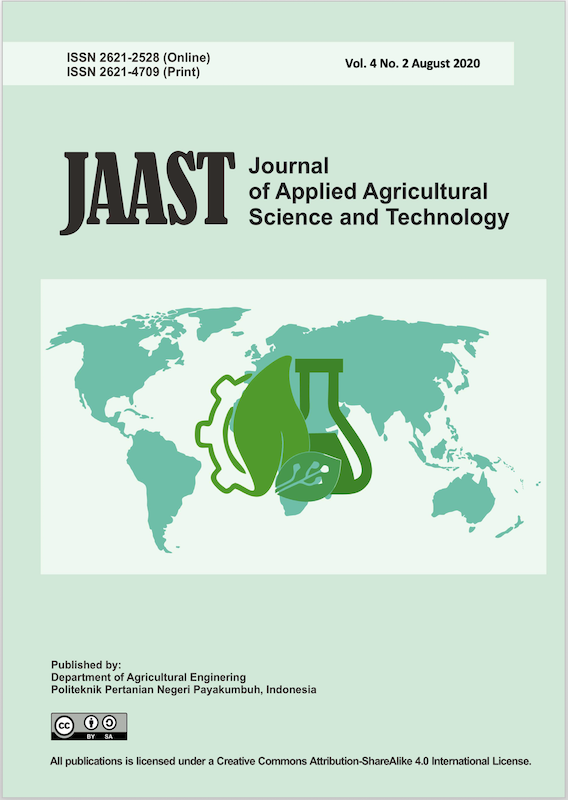Endophytic Bacterial Consortia as Biological Control of Bacterial Leaf Blight and Plant Growth Promoter of Rice (Oryza sativa L.)
Abstract
The consortia of endophytic bacteria with various mechanisms (competition, antibiotics, induction of resistance, and others), simultaneously, are more effective in controlling pathogens and increasing plant growth. The purpose of this study was to obtain endophytic bacterial consortia capable of suppressing of bacterial leaf blight and promoting the growth of rice plants. The study consisted of three experimental stages. The first stage was the test on the antibiosis ability of the endophytic bacterial consortia to suppress of pathogenic bacteria Xanthomonas oryzae pv. oryzae (Xoo) using the Kirby Bauer method. The second stage was the test on the ability of endophytic bacterial consortia to promote the growth of rice seedlings. The experiment was arranged in a Completely Randomized Design (CRD) which consisted of six combinations of endophytic bacterial consortia and 15 replications within each combination. The endophytic bacterial consortia were introduced by soaking the seeds, and the observations were made on the plant height, number of leaves, root length, fresh weight, and dry weight of rice seedlings. Meanwhile, the third stage was the test on the ability of endophytic bacterial consortia to suppress of bacterial leaf blight (BLB) diseases and to promote the rice plant growth. The experiment was arranged in a Completely Randomized Design (CRD) with six combinations of endophytic bacterial consortia and five replications within each combination. The endophytic bacterial consortia were introduced by soaking the roots of the seedlings. The observations were made on the incidence of disease, disease severity, number of leaves, plant height, and number of tillers. The results showed that all endophytic bacterial consortia had antibiosis abilities. The best endophytic bacterial consortia for controlling bacterial leaf blight and promoting the growth of rice seedlings and plants were the C (Bacillus sp SJI; Bacillus sp HI) and D (Bacillus sp SJI; S.marcescens isolate JB1E3) consortia.
Downloads

This work is licensed under a Creative Commons Attribution-ShareAlike 4.0 International License.













 +6281374680225
+6281374680225 journaljaast@gmail.com
journaljaast@gmail.com
